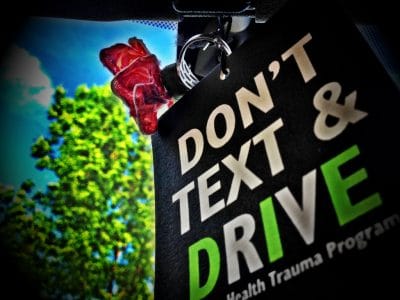Man’s desire to accomplish many things in a shorter time requirement leads to the propensity to multitask. A lot of technology has been created to cater to multitaskers. One simple example is timers on cooking devices. They make it easy for people to perform another task away from the kitchen without worrying about burning or overcooking the food.
Technology has been a great partner in making people’s lives easier, safer and more comfortable. Today people can use text messaging to open garages and set burglar alarms, and smoke detectors and gas leak detectors can send text messages to warn homeowners of danger. Essentially, technology is about saving time and effort.
When texting while driving was made illegal by law, inventors created a device to address this limitation to motorists. We could say that technology once again has come to the rescue; but has it?
This new technology is referred to as “hands-free texting.” Voice activated gadgets, now part of some cars’ features, allow the driver to receive and respond to either a text message or email while keeping her hands on the steering wheel and eyes on the road. These devices also allow the driver to make or receive phone calls hands-free.
Now that drivers can keep both hands on the wheel, look at the road, and use their phones, they feel safer texting and making calls while driving. With the creation of this technology, makers of hands-free devices are suggesting that drivers are safe, and are not at a great risk of creating an accident that may injure themselves or other motorists.
The Psychology Department of the University of Utah reported that the use of cellular phones is more cognitively engaging than the “old standards” of driver distraction. Old standards include talking to passengers, eating, drinking, lighting a cigarette, shaving, applying make-up, and listening to the radio. The research disclosed that as of 2010, 90% of the US population owned a cell phone and that 85% of motorists admitted using their cell phones while driving. This admission was validated by a number of fatal crashes reported associated with the use of cell phones while driving.
The researchers conducted an experiment to answer this crucial question: are hands-free devices safe? Participants were seated behind a wheel in a stationary car and had a special skull cap attached which measured brain activity. The participants’ brainwaves, eye movement, and driving performance were measured while using the hands-free device and engaging in driving.
Results indicated that the driver’s brain was so overloaded with talk-to-text tasks and talking on a cell phone that he had the little residual capability to pay attention to the roadway. The gadget made the driver miss visual cues, have slower reaction times, and even exhibit a sort of tunnel vision. The conclusion was that hands-free texting poses the same risks as hand-held texting does.
The ABC article further stated that the AAA wants a restriction on the use of hands-free devices but the Alliance of Automobile Manufacturers is skeptical of the study’s findings.
The grief associated with the loss of lives due to distracted driving is something not worth venturing into. Do we have to pile up statistics to prove that indeed any form of texting while driving is very dangerous for all road users? Most agree that technology can be a good tool but we should not allow it to become deadly for others. The message you are intending to read or to send is not as important as your life or should NOT be given priority over the safety of other road users.
Photo “Don’t text and drive” copyright of Michael Babcock.
